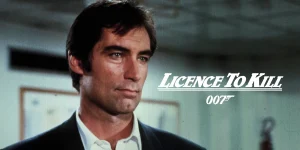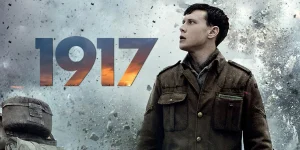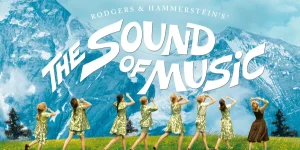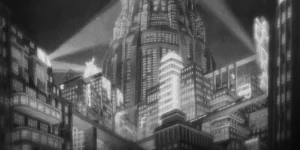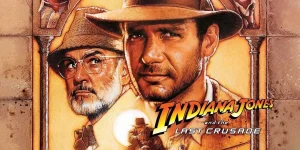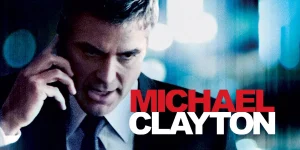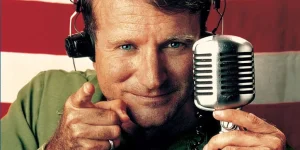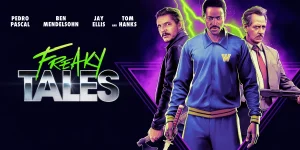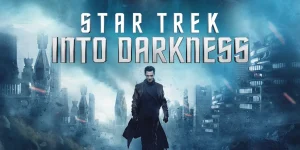All Quiet on the Western Front (2022), directed by Edward Berger, is a harrowing and unflinching adaptation of Erich Maria Remarque’s seminal anti-war novel. This German-language film revisits the Western Front during World War I through the eyes of a young German soldier, presenting a brutally honest, emotionally charged, and visually arresting portrayal of the human cost of war.
Table of Contents
ToggleDetailed Summary
Introduction: Young Men, False Glory
The story begins in 1917, three years into World War I. A young German student named Paul Bäumer (played by Felix Kammerer) enlists in the Imperial German Army with his friends, swept up by nationalistic fervor and the illusion of heroic glory. Their youthful optimism is shattered within hours of reaching the front.
Unlike previous adaptations, this version spends less time on the classroom idealism and dives quickly into the horrors of war, showing Paul’s induction, the recycling of blood-soaked uniforms from dead soldiers, and his first taste of trench life.
Life in the Trenches
As Paul adjusts to the grim reality of combat, he bonds with fellow soldiers such as Stanislaus “Kat” Katczinsky (Albrecht Schuch), a seasoned veteran who becomes a father figure, and his friends Kropp, Müller, and Tjaden. Together, they endure shellfire, hunger, lice, and unspeakable violence, their spirits slowly crushed by the futility of the war.
The film oscillates between the unrelenting brutality of trench warfare and the quieter moments of camaraderie that make the characters’ suffering feel deeply personal.
Diplomatic Parallels
Unlike earlier versions, this film incorporates a parallel narrative that shows German diplomats negotiating the armistice with the French. The inclusion of Matthias Erzberger (Daniel Brühl), a real-life German politician, adds historical context and contrasts the front-line suffering with the distant, sterile world of politics. This tension between soldiers dying for inches and officials haggling over clauses is central to the film’s message.
Personal Loss and Psychological Deterioration
As Paul’s comrades begin to fall—often in sudden and meaningless ways—he becomes increasingly desensitized. The film spares no detail in showing the randomness and savagery of death in the trenches. Paul watches helplessly as his close friends are killed one by one. Kat, his closest friend and mentor, dies after being accidentally wounded during a supply run—a particularly cruel and gut-wrenching moment that underlines the pointlessness of war.
Final Days of the War
Even as the armistice is being signed, orders are given to continue fighting until the last moment to avoid appearing weak. This leads to a tragic final push ordered by General Friedrichs (a fictional character representing the outdated military mindset), who demands an offensive at 10:45 AM—just 15 minutes before the war is set to end.
Movie Ending
In the final scenes, Paul, weary and emotionally deadened, charges one last time into battle. As he fights in brutal hand-to-hand combat, he kills a French soldier in a trench, only to be mortally stabbed from behind moments later. The camera lingers on Paul’s face as he slowly dies, his expression finally at peace—echoing the film’s title. His body is found just after 11:00 AM, when the war has officially ended. A young recruit finds his corpse and quietly pockets Paul’s identification tag, suggesting the cycle of violence will continue.
The film ends not with triumph, but with silence and the heavy weight of loss. It is a devastating conclusion that encapsulates the film’s core message: that war dehumanizes and destroys, and no one walks away unscarred.
Are There Post-Credits Scenes?
No, All Quiet on the Western Front (2022) does not feature any post-credits scenes. The ending is final and self-contained, with no hints at sequels or follow-ups. The credits roll in respectful silence, in line with the film’s somber tone.
Type of Movie
This is a war drama and anti-war film. It leans heavily into realism, psychological trauma, and historical accuracy, and is more of a meditation on the futility of war than a traditional action movie.
Cast
- Felix Kammerer as Paul Bäumer
- Albrecht Schuch as Stanislaus Katczinsky
- Aaron Hilmer as Albert Kropp
- Moritz Klaus as Franz Müller
- Edin Hasanović as Tjaden
- Daniel Brühl as Matthias Erzberger
- Devid Striesow as General Friedrichs
Film Music and Composer
The haunting and minimalist score was composed by Volker Bertelmann (also known as Hauschka). The music is intentionally dissonant, often dominated by harsh, distorted brass and industrial sounds that underline the chaos and psychological torment of war. The three-note leitmotif has become instantly recognizable for its unsettling repetition.
Filming Locations
The film was primarily shot in Czech Republic, especially around Prague and central Bohemia. The filmmakers chose these locations for their versatile landscapes and ease of recreating the grim, muddy fields of the Western Front. Detailed trench systems were constructed from scratch to provide immersive authenticity.
Awards and Nominations
- Academy Awards (2023):
- Won:
- Best International Feature Film
- Best Cinematography
- Best Original Score
- Best Production Design
- Nominated:
- Best Picture
- Best Adapted Screenplay
- Best Makeup and Hairstyling
- Best Sound
- Best Visual Effects
- Won:
- BAFTA Awards:
- Won: 7 awards including Best Film, Best Director, and Best Original Score
The film was universally acclaimed for its direction, cinematography, and score.
Behind the Scenes Insights
- Felix Kammerer, a theater actor, had never appeared in a film before this role.
- The trench sets took over two months to construct and were built in an actual muddy field to preserve realism.
- The cast underwent military training to prepare for the physical demands of filming.
- Director Edward Berger chose to shoot many scenes in long, unbroken takes to increase immersion.
- The decision to add the Erzberger storyline was a deliberate choice to ground the story in political reality and avoid romanticizing the war.
Inspirations and References
- Based on the 1929 novel Im Westen nichts Neues by Erich Maria Remarque, which was itself inspired by the author’s experiences as a German soldier in WWI.
- The film draws visual and thematic influence from:
- 1917 (for its visual realism)
- Paths of Glory
- Come and See
Unlike the 1930 or 1979 film adaptations, the 2022 version diverges more significantly from the book in terms of plot structure and character fates.
Alternate Endings and Deleted Scenes
- There are no officially released alternate endings.
- Some scenes, particularly those exploring Paul’s life before enlistment, were cut for pacing and thematic focus.
- Director Edward Berger emphasized staying in the trenches for narrative integrity, reducing the film’s early scenes to avoid detours.
Book Adaptations and Differences
While based on Remarque’s novel, the 2022 adaptation differs in several key ways:
- Political Subplot: The film includes the armistice negotiations with Erzberger, which were not in the novel.
- Different Ending: In the book, Paul dies on a quiet day, symbolizing the war’s senselessness. In the film, his death is tied directly to the last-minute battle.
- New Characters: General Friedrichs is a fictional addition, representing old-guard military hubris.
Despite these changes, the film retains the novel’s core anti-war message.
Memorable Scenes and Quotes
Key Scenes
- Paul’s first exposure to the battlefield—his horror-struck face says everything.
- The muddy tank attack scene, one of the most technically impressive sequences.
- Kat’s death—slow, quiet, and agonizingly mundane.
- Paul killing a French soldier in a crater and watching him die slowly—a deeply affecting moment of guilt and helplessness.
- The final 15-minute battle ordered before the armistice takes effect.
Iconic Quotes
- “We are so filthy. We are so filthy and gray. And we stink. And our hair is falling out. And you can smell the rats eating our bodies.”
- “It’s good that the war is over. But what will we do with ourselves?”
Easter Eggs and Hidden Details
- The recycled uniform at the beginning contains the name tag of a previously deceased soldier—an early hint at the expendability of life.
- Paul’s death date aligns with the historical signing of the armistice.
- General Friedrichs represents real figures who ignored ceasefire calls, contributing to post-war trauma and resentment.
Trivia
- The novel was banned in Nazi Germany for being unpatriotic.
- The movie was Germany’s official entry for the 2023 Oscars and the first German-language adaptation of the novel.
- The lead actor, Felix Kammerer, was hand-picked after months of casting and had no prior film experience.
- Over 10,000 extras were used for crowd and battle scenes.
Why Watch?
If you’re looking for a war film that doesn’t glorify combat but instead shows its brutal psychological and physical consequences, this is essential viewing. It’s not just a movie—it’s an experience designed to challenge your perception of war, nationalism, and human suffering.
Director’s Other Notable Work
- Jack (2014)




